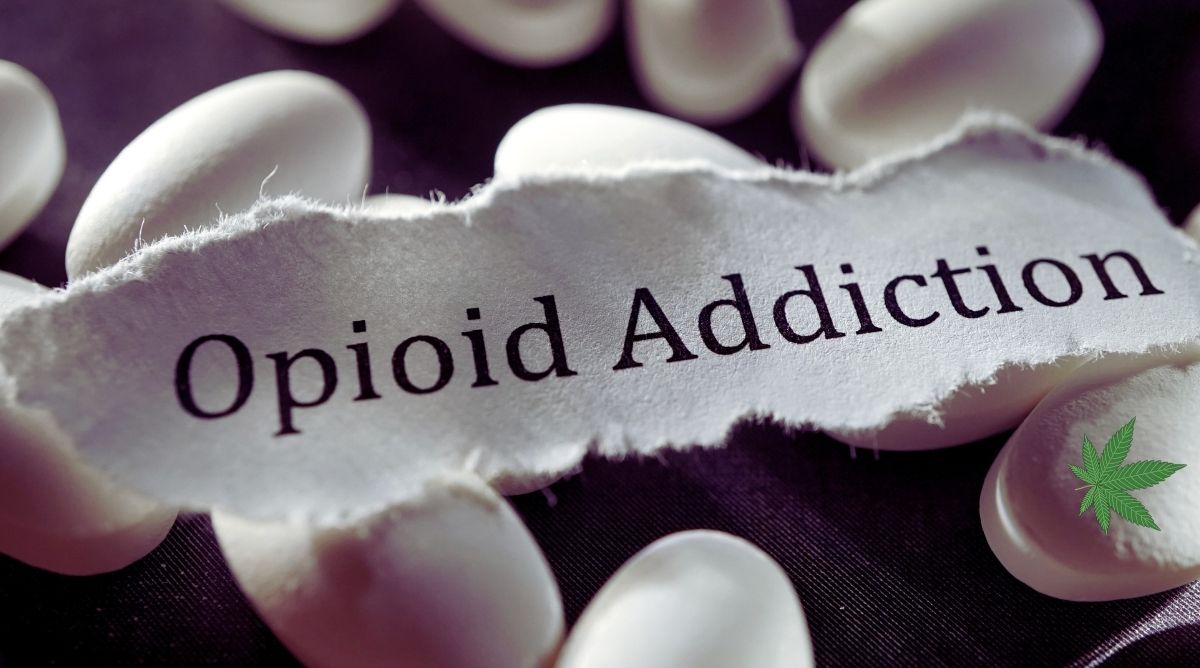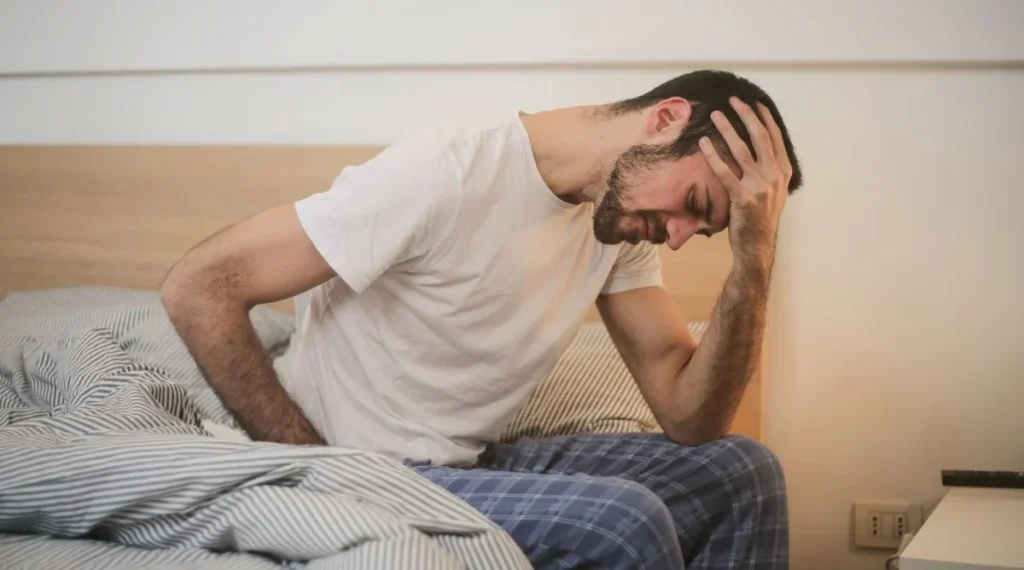
Drug overdose deaths in the United States hit a new high of more than 96,000 in the 12 months ending March 2021. That number is hard to process because overdose deaths are always avoidable. The number of Americans losing their lives to drug overdose is climbing.
Medical marijuana can be offered as a substitute treatment plan for many illnesses and symptoms. We continue to get more evidence that opioids do not work for many people, for long-term use, because of the high potential for addiction, mental health, and physical side-effects that opiates can cause. And the inherent overdose risks linked to opioids.
Prescription opioid medications are a leading cause of overdose deaths in the United States. Since 1999, there have been more than 820,000 deaths from opioid misuse and abuse. As a nation, if we are going to turn around the opioid epidemic and save lives, we need to evaluate safer alternatives.
Synthetic opioids like fentanyl, methamphetamine, and other drugs other than methadone cause most drug overdose deaths in the United States. The industrial machine that keeps pushing opioids out as a preferred prescription is causing an estimated $78.5 billion in economic burden annually. That includes lost productivity estimates, addiction treatments, criminal justice, and healthcare costs.
How many lives would be saved if American lawmakers flipped the switch and permitted doctor-supervised cannabis? What if a prescription for medical marijuana was the first line of treatment for people with chronic pain? The change could be lifesaving.
When the Covid-19 health emergency first started in early 2020, it was a shock to Americans. The virus quickly went from something that was happening overseas in China to a threat that landed on our front door. And the United States was not ready for it.
No one expected the fallout from the pandemic to be so catastrophic in terms of loss of life and pushing our healthcare system to the point of breaking. The economic impact has also been very difficult. Some sectors did not recover in the bounce-back phase of the Covid-19 pandemic. It may take years for some sectors to recuperate.
But how is the average American doing? Some have enjoyed the transition to working from home. But that is only the case for a small number of professionals. Many people do not have the option to work from home. And some have suffered staggering unemployment.
A recent study reported that from August 2020 to February 2021, the number of people reporting symptoms of anxiety or depression increased to 41.45%. The largest increase in diagnosed mental health disorders was adults 18-29 years.
The use of recreational drugs has increased during the pandemic. The stress, combined with more time at home, increased need for social distancing, and travel restrictions have meant few options to “get away from it all.” But drugs and alcohol make it possible to briefly escape reality. According to the CDC, this is why drug abuse has increased by more than 29% from 2020 to March 2021.

It is hard to understand why so many people overdose on opioid medications. After all, they are prescribed by a physician. Also, there are many new laws that severely restrict how often a physician can prescribe them to a patient.
There are actually many circumstances that can lead to opioid abuse. Some of them have to do with the chemical dependency that some people develop from opioids. Other factors can include mental health disorders commonly associated with chronic pain.
Opioid medications can be high risk for patients because:
Over time, opioids can become less effective at managing pain. That is not true for every patient using opioid medications. Do you think most people would start using opioid medications if they knew opioids could increase the severity of their chronic pain? Probably not.
The body fights the whole opioid mechanism of numbing receptors. The human brain understands that pain receptors serve an important role. So, when the pain receptors stop reliably reporting sensations of inflammation, pain, and discomfort, the body knows it’s not normal.
What happens next is an understood mechanism of opioids. The body retaliates by turning up the sensitivity of pain receptors. A good strategy; if pain receptors aren’t working, increasing the level of sensitivity should fix the problem.
When the human body turns up pain sensitivity, patients on opioids report increased discomfort. Even if they have been managing their pain successfully for years with prescription opioids, it can stop working slowly, where the patient begins to feel increasing pain levels. During this period, the patient is likely to ask for a different opioid or a stronger potency.
Also, opioids can stop working literally overnight. Leaving the patient to experience full levels of pain and discomfort they may not have endured for years when their pain was effectively managed with prescription medications.
Imagine fighting your way through severe pain, finding a solution for it, and then having your condition revert to high pain levels? Patients with treatment-resistant pain symptoms may develop symptoms of severe anxiety or depression.

A patient with chronic pain visits their primary care provider (PCP). The patient tells the doctor that the dose of prescription opioid medications isn’t working anymore. Increased intensity of pain and frequency are two symptoms that patients notice when opioids stop working well.
Except there are no other alternatives. For moderate to severe pain, NSAIDs do not always work. Pain management practitioners may suggest a combination of natural remedies (heat, ice, elevation, or compression exercises). Or, the doctor may request a change in the medication.
The clinical response in the past has been to increase the potency and frequency of opioid doses. That only accelerates the action vs. reaction of increased sensitivity in pain receptors, though. The human brain doesn’t like impaired sensory input. Opioid dose goes up? So does pain sensitivity for many patients—a situation where the cure is worse than the disease in some cases.
More education and new legal requirements for physicians to control prescribing opioids. That was supposed to diminish the number of opioid overdoses annually. Instead, the number of overdoses from opioid medications has continued to climb.
And that is because more than 50 million Americans live with chronic pain and high-impact chronic pain. About 8% of U.S. adults have high-impact chronic pain. Or symptoms of pain that make activities of daily living harder for patients. Including self-care and maintaining employment.
If you are addicted to drugs and serve time, you may get the help you need. Prison is the ultimate environment for staying sober; it’s hard to get drugs when you are incarcerated. But the memory of the drug addiction remains, even if the individual has not used drugs for years.
A large number of annual opioid overdose deaths are ex-felons—people who have served a long sentence. The shock of transitioning back into normal life after a life behind bars can be terrifying. And some people head straight for one of the easiest drugs to find; opioid medications.
Former inmates have a very high rate of opioid overdose. A study in North Carolina suggested that someone who had been incarcerated was forty times more likely to die from an opioid overdose than Americans who had not served time.
What do you do if your physician has already prescribed you the maximum safe number of opioids for the month? And it is only the second week? Well, for patients who are desperate to stop the pain, they may seek out new practitioners. Have more than one primary care provider or frequent clinics.
With more than one prescriber, the amount of opioids that a patient could receive increases. Unless the patient has opted into electronic health records. A statewide method of providing accurate prescription and treatment plans for patients.
It is possible for patients who want to abuse opioids to get prescribed from more than one practitioner. Electronic health records are optional (not mandatory). It can be difficult to prevent patients from seeking prescriptions from more than one practitioner.

When you think about overdose cases where someone has combined alcohol with opioids, you may think it was deliberate. That someone intentionally consumed a large number of opioid pills with a high volume of alcohol for recreational use.
That is not the most common scenario. What is more frequent are average patients with severe chronic pain who take opioids daily. People forgot that opioids and alcohol could make for a deadly combination.
Overdose deaths resulting from opioid use and alcohol are usually accidental injuries. Many people don’t realize that combining the two drugs can lead to respiratory arrest, coma or unconsciousness, and death. But it is easy to do if you forget that you are on a sustained dose of opioid medications, even for a moment.
Any medication (natural or pharmaceutical) can cause side effects. For some patients, the side effects from taking opioid prescriptions can be worse than the symptoms of the disease or disorder.
Most people experience side effects when they start taking opioid medications. But other people can develop different reactions to opioid medicines after taking them for a long period of time.
Some of the most common side-effects from opioid medications are:
Some people think that because a physician prescribes a medication, they cannot become addicted to the drug. But addiction can happen with any pharmaceutical. And some patients are hesitant to report it to their primary care provider until the symptoms of the addiction disrupt their lives.
The legalization of cannabis in states began with a goal to improve compassionate care. That means, to provide alternative medicines that would help patients suffering from debilitating conditions. Medical marijuana was legalized for that purpose; to help patients.
Cannabis can be an effective treatment and resource for pain management. Because chronic pain can come from more than one location in the body, cannabis could be more effective than conventional pain medications.
The nerves that register pain are spread out through your whole body. These peripheral nerves that are responsible for detecting and communicating pain are loaded with cannabinoid receptors. When the nerve receptors are exposed to cannabinoids, they essentially stop them from communicating pain.
Cannabinoids naturally disrupt something called ensemble synchrony. And they help prevent pyramidal cells from firing off those messages through the central nervous system that report pain to the brain. The pain and inflammation response is still happening in the body, but you aren’t feeling it acutely after cannabis numbs the sensors.
Some people have suggested that cannabis could disrupt the pharmaceutical industry. And possibly even replace opioid and NSAID medications for pain relief. Others would like to see the amount and potency of opioids reduced. This would happen through treatment plans that included lower-dose opioids with medical cannabis for long-term pain management.
Many states have proven that doctor-supervised cannabis can work and help patients. Physicians have the ability in states where MMJ is legalized to prescribe or recommend it for their patients. How long will it be before cannabis becomes the first step in creating better pain management results?
The impact of making cannabis the frontline response for pain could save many lives. Patients could receive medical marijuana in hospital settings or for opioid abuse treatments when released from incarceration.
Cannabis can conflict with other drugs. But generally, medical marijuana provides few to no side effects, unlike opioids. That means for people who may have multiple diseases and symptoms, it is possible to treat a patient with both prescription medications and cannabis.
Since cannabis and prescription opioids have different mechanics for resolving pain, the two drugs at lower potency levels could work better for patients with chronic pain.
Featured Image: Canva
No Information on MarijuanaDoctors.Com should be used to diagnose, treat, prevent or cure any disease or condition. You can view our Full Disclaimer here.